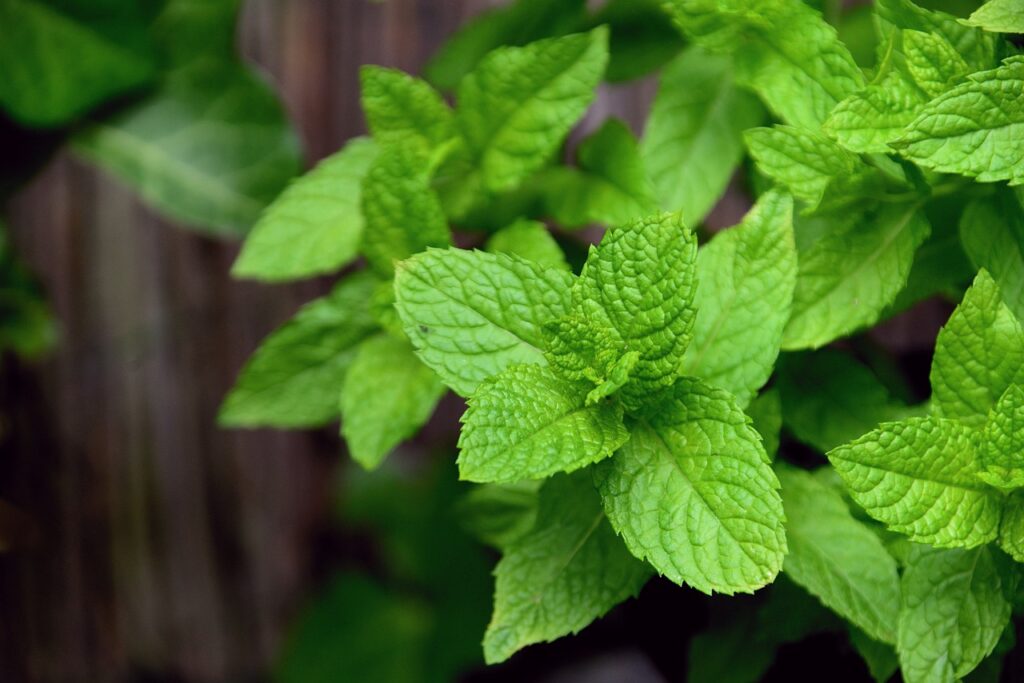Mint practically grows itself; all you need to do is confine this spreading perennial herb to a container or confined bed to keep it from taking over your yard! It’s a wonderful herb that adds a fruity, aromatic flavor to foods and tea—plus, is useful for health remedies such as aiding digestion and relieving headaches. See how to plant and grow mint.
About Mint

Mint is a perennial herb with very fragrant, toothed leaves and tiny purple, pink, or white flowers. There are many varieties of mint—all fragrant, whether shiny or fuzzy, smooth or crinkled, bright green or variegated. However, you can always tell a member of the mint family by its square stem. Rolling it between your fingers, you’ll notice a pungent scent and think of candy, sweet teas, or maybe even mint juleps.
As well as kitchen companions, mints are used as garden accents, ground covers, air fresheners, and herbal medicines. They’re as beautiful as they are functional, and they’re foolproof to grow, thriving in sun and shade all over North America. Since mint can be vigorous spreaders, you simply have to be careful where you plant it.
How to Plant Mint
There is not really much that mint needs besides moisture and rich soil. It is pretty hard to kill a mint plant. The only maintenance required will be to make sure that you keep the mint in check and watch for overgrowth. It will take over your garden if you let it. Harvest or shear the plants to keep them lush with leaves.
Sow outdoors in late spring or start seed indoors about eight to 10 weeks before the last frost. Keep soil moist until the seed germinates. Mint seed germinates in 10 to 15 days. Seed-grown plants should reach harvestable size within two months.
Sunlight:
Mint requires a very bright indoor location. Outdoors, mint can tolerate a good bit of shade. But inside, the more light, the better. Otherwise, the plant will stretch for the light and become leggy and pale. If you don’t have a sunny, north-facing window that receives sun through the better part of the day, consider purchasing a small grow light to install over your mint plant.
Water:
One of the most straightforward factors to consider when learning how to grow mint indoors is watering. Unlike some other herbs and houseplants, mint is far from demanding. Yes, you can over- or under-water it, but neither is easy to do. Mint tolerates both “wet feet” and dry soils. However, I aim for a good balance between the two. Water the plant only when the soil feels dry to the touch and the pot is light. To water indoor mint plants, move the pot to the sink or bathtub, turn on the water, and let it flush through the soil and exit the drainage hole in the bottom of the pot. I flush water through the pot three or four times, let it drain fully, then return the pot to its spot on the windowsill.
Fertilizer:
Feed container mint a balanced, all-purpose liquid fertilizer in early spring when new growth emerges. Fertilize every four to six weeks after that and throughout the growing season. Nutrients leach away quicker from potted plants that are frequently watered.
How to Harvest Mint
Harvest mint leaves at any size by pinching off stems. For a large harvest, wait until just before the plant blooms, when the flavor is most intense, then cut the whole plant to just above the first or second set of leaves. In the process, you will remove the yellowing lower leaves and promote bushier growth. Three such harvests per season are typical for mint.
Leave a reply













